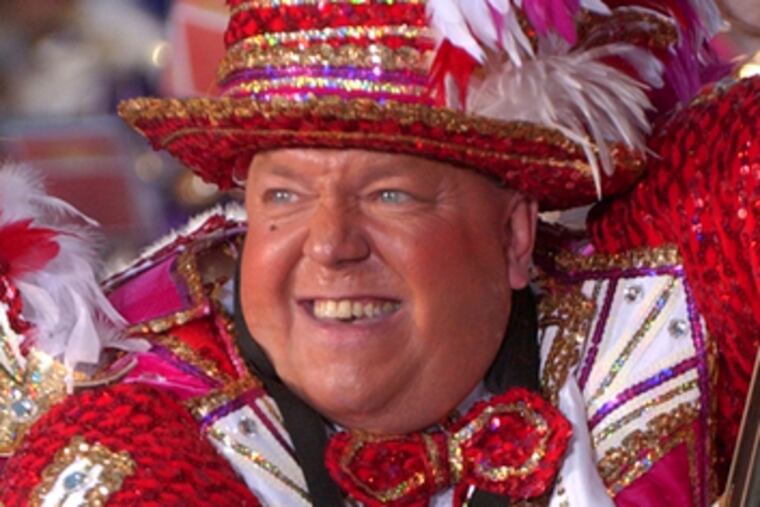Golden Slippers getting more threadbare
CHECK ALMOST any Philadelphia tourist brochure and you'll see a Mummer in New Year's sequins and feathers. Love 'em or hate 'em - and at times, Philadelphians do both - the Mummers are an instantly recognizable symbol of the city.

CHECK ALMOST any Philadelphia tourist brochure and you'll see a Mummer in New Year's sequins and feathers. Love 'em or hate 'em - and at times, Philadelphians do both - the Mummers are an instantly recognizable symbol of the city.
So it makes no kind of sense that Philadelphia would imperil one of its signature attractions by forcing it out of Center City.
Just three weeks before the Mummers are scheduled to step onto Broad Street, city government is insisting that they sign a contract obligating them to cover any expenses for the parade that exceed $300,000 in police overtime and sanitation. The city estimates the cost of the 2009 parade as $760,000 - a price tag, says Mummers' lawyer George Badey, that the city won't explain in detail.
This followed an announcement that the city was cutting $336,000 in prize money that it provided in the past - a move, says Badey, that could send some clubs into bankruptcy.
As an alternative, according to Badey, the city has offered to let the Mummers march in South Philadelphia only, ending the parade at 12th Street and Washington Avenue, or at 2nd and Washington, depending on which report you believe. You read that right: There's a chance the 2009 Mummers Parade would not strut through Center City, where most of the spectators gather, or past the hotels where people have reserved rooms to watch them, or perform at City Hall.
Even for a city in desperate financial straits, this is like putting a gun to your own head and threatening to pull the trigger unless someone pays you a ransom.
While some Mummers clubs counted on prize money when they invested in costumes and props, we can't justify spending city funds on prizes at this time, even though it breaks an implicit contract. Cutting back the parade at this late date is something quite different: It risks more money than it might save.
The parade generates significant revenue for the city: A study commissioned by the Mummers puts it at $9 million a year - including $800,000 in taxes - both from parade day and the extensive, and expensive, preparations beforehand. One can argue the amount, but there's no question the Mummers provide tangible and intangible returns on investment.
Bottom line: The city should have given the Mummers fairer warning - say, a year - to find private funding.
As anyone who has tried to deal with the Mummers can attest, their feuding and lack of central authority has frustrated many well-meaning attempts to fit the parade into the kind of event that can be marketed along the lines of Mardi Gras or the Rose Parade. A year's notice could have served - in fact still could serve - as the final ultimatum to the clubs: You must organize yourselves into a coherent structure and find leadership with the authority to drive the needed changes.
The city's position may even be unconstitutional. No kidding: In 1982, a federal appeals court declared that participating in the Mummers Parade is a protected right of free expression. Whether the so-called "right to Mumm" would hold up in court against the city's crisis would make for fascinating - but avoidable - litigation.
The city, which managed to find $1 million to help underwrite the Phillies parade expenses, can still turn this stalemate into a golden-slipper opportunity, instead of a pound-foolish decision. *